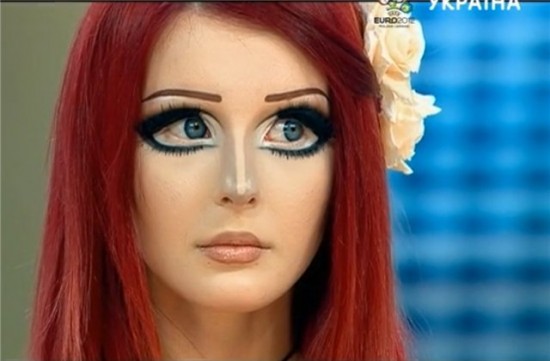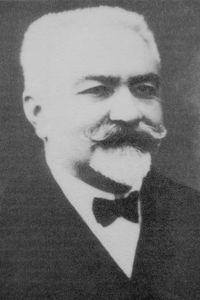Podcast: Play in new window | Download (Duration: 9:20 — 7.5MB)
Aboneaza-te! Apple Podcasts | Spotify | iHeartRadio | Stitcher | Blubrry | Email | TuneIn | RSS
Skeptical Reporter for October 26th, 2012
Sadly, the skeptics community has lost two great personalities this week. Leon Jaroff, a science writer and editor who persuaded Time Inc. to start Discover magazine in 1980, became its top editor and for many years wrote the popular Skeptical Eye column challenging pseudosciences, died Saturday at his home in East Hampton, New York. He was 85. Mr. Jaroff was managing editor of Discover, a monthly, for four years, overseeing cover articles on the search for life in space, the evolution of sex and the secrets of the brain, among other topics. Also, the Center for Inquiry marks with great sadness the passing of Paul Kurtz, founder and longtime chair of the Committee for Skeptical Inquiry, the Council for Secular Humanism, and the Center for Inquiry, who died at the age of 86. A philosopher, activist, and author, Kurtz was for a half-century among the most significant and impactful figures in the humanist and skeptic movements.
For many women, premenstrual syndrome, or PMS, is a familiar preamble to their monthly cycle. But a new review of the data suggests that mood changes aren’t as closely tied to menses as many have assumed. A team led by Dr. Sarah Romans of the University of Otago in New Zealand reviewed 47 studies that followed women’s moods across the menstrual cycle. Only 15% of the studies found that women tended to have “classic” PMS: moods that worsened as the menstrual period approached and lifted when menstruation occurred. An additional 38% found PMS that lasted into menstruation or another cycle phase. However, a further 38% of the studies found no association between mood and any particular phase of the cycle. And 9% found that the worst moods actually occurred outside of the premenstrual phase. That means that little more than half of the studies (53%) found any link between menstruation and bad mood, and 85% didn’t find classic PMS. “The major finding of this review was that clear evidence for a specific premenstrual-phase-related mood occurring in the general population is lacking”, the authors concluded.
Why some people respond to treatments that have no active ingredients in them may be down to their genes, a study in the journal PLoS ONE suggests. The so-called "placebo effect" was examined in 104 patients with irritable bowel syndrome (IBS) in the US. Those with a particular version of the COMT gene saw an improvement in their health after placebo acupuncture. The scientists warn that while they hope their findings will be seen in other conditions, more work is needed. Edzard Ernst, a professor of complementary medicine at the University of Exeter, said: "This is a fascinating but very preliminary result. It could solve the age-old question of why some individuals respond to placebo, while others do not. And if so, it could impact importantly on clinical practice. But we should be cautious - the study was small, we need independent replications, and we need to know whether the phenomenon applies just to IBS or to all diseases." The placebo effect is when a patient experiences an improvement in their condition while undergoing an inert treatment such as taking a sugar pill or, in this case, placebo acupuncture, where the patient believes they are receiving acupuncture but a sham device prevents the needles going into their body.
Eating a raw food diet is a recipe for disaster if you're trying to boost your species' brainpower. That's because humans would have to spend more than 9 hours a day eating to get enough energy from unprocessed raw food alone to support our large brains, according to a new study that calculates the energetic costs of growing a bigger brain or body in primates. But our ancestors managed to get enough energy to grow brains that have three times as many neurons as those in apes such as gorillas, chimpanzees, and orangutans. How did they do it? They got cooking, according to a study published online today in the Proceedings of the National Academy of Sciences. "If you eat only raw food, there are not enough hours in the day to get enough calories to build such a large brain. We can afford more neurons, thanks to cooking " says Suzana Herculano-Houzel, a neuroscientist at the Federal University of Rio de Janeiro in Brazil who is co-author of the report.
Google Maps has officially stepped into what may be its most difficult challenge yet — mapping the alleys, ledges and trails of the world unreachable by Street View’s cars, tricycles and snowmobiles. The effort formally began on foot Monday as Google took three of its Trekker backpacks down into the Grand Canyon for the new gadgetry’s maiden voyage. “When we were designing Trekker, we really knew we wanted to take it to these rugged, remote locations. We worked really hard to make sure it was waterproof and could handle heat and cold and all kinds of abuse on the trail”, said Ryan Falor, a product manager on Google’s Street View special collections team. The Trekker — which looks like a Ghostbuster’s Proton Pack with an oversized soccer ball mounted on top and a USB-connected Android smartphone and was first shown off at a Google Maps event back in June. At that point, the device was still a prototype and a bit lighter than it is now. But after about a year and a half of prototypes and improvements, the Trekker is finally polished enough to collect 360-degree imagery for use in Google Maps Street View.
The Biggest Loser might be a TV ratings winner, but its extreme depiction of exercise is more likely to turn people off than get them off the couch, according to new research from the University of Alberta. Researchers in the Faculty of Physical Education and Recreation found that watching a short video clip of the Biggest Loser fueled negative attitudes toward exercise, raising further questions about how physical activity is shown in the popular media. "The depictions of exercise on shows like The Biggest Loser are really negative," said lead author Tanya Berry, Canada Research Chair in Physical Activity Promotion. "People are screaming and crying and throwing up, and if you're not a regular exerciser you might think this is what exercise is -- that it's this horrible experience where you have to push yourself to the extremes and the limits, which is completely wrong." Berry said the results debunk the belief held by some researchers and many in the popular media that shows like The Biggest Loser can be motivational and get people off the couch. In fact, the negative portrayals of exercise are counterproductive to public health campaigns.
Researchers in the US have been shocked to discover a beluga whale whose vocalizations were remarkably close to human speech. While dolphins have been taught to mimic the pattern and durations of sounds in human speech, no animal has spontaneously tried such mimicry. But researchers heard a nine-year-old whale named NOC make sounds octaves below normal, in clipped bursts. The whales are known as "canaries of the sea" for their high-pitched chirps, but while a number of anecdotal reports have described whales making human-like speech, none had ever been recorded. Once they identified NOC as the culprit, they caught it on tape. They found that vocal bursts averaged about three per second, with pauses reminiscent of human speech. Analysis of the recordings showed that the frequencies within them were spread out into "harmonics" in a way very unlike whales' normal vocalizations and more like those of humans. They also found that the mimicry was no easy task for NOC. "Our observations suggest that the whale had to modify its vocal mechanics in order to make the speech-like sounds," said Sam Ridgway, president of the National Marine Mammal Foundation and lead author on the paper. "The sounds we heard were clearly an example of vocal learning by the white whale."
A small British company has developed a way to create petrol from air and water, technology it hopes may one day contribute to large-scale production of green fuels. Engineers at Air Fuel Synthesis in northern England, say they have produced 5 litres of synthetic petrol over a period of three months. The technique involves extracting carbon dioxide from air and hydrogen from water, and combining them in a reactor with a catalyst to make methanol. The methanol is then converted into petrol. By using renewable energy to power the process, it is possible to create carbon-neutral fuel that can be used in an identical way to standard petrol, scientists behind the technology say. "It's actually cleaner because it's synthetic. You just make what you need to make in terms of the contents of it, so it doesn't contain what might be seen as pollutants, like sulfur", Peter Harrison, chief executive officer of AFS, said in an interview. The work is part of a two-year project that has so far cost around 1 million pounds. AFS plans to build a commercial plant in the next two years that will produce around 1,200 liters a day of specialist fuels for the motorsports.
And now, in local news from Romania, we learn that
Romanians’ smoking habits will be analyzed in a five year study by the Davidson College, in the United States , and the University of Medicine and Pharmacy of Targu Mures, Romania. The research will be coordinated by professor Kristie Folley and professor Balacz Peter, from the University Semmelweis in Budapest, who is in charge of a similar project in Hungary. The project aims to study smoking in teen and children groups, in pregnant women and people with cardiovascular diseases. Also it will try to answer questions about the high rate of failure in quitting smoking. Romania has a high rate of both active and passive smokers and a lot of those trying to quit aren’t able to do so.
Links:
- http://www.nytimes.com/2012/10/22/business/media/leon-jaroff-editor-at-time-and-discover-magazines-dies-at-85.html?_r=0
- http://www.centerforinquiry.net/news/cfi_mourns_the_death_of_paul_kurtz_its_founder/
- http://centerforinquiry.net/paul_kurtz_obituary
- http://healthland.time.com/2012/10/22/pms-is-a-myth-new-study/
- http://www.bbc.co.uk/news/health-20042128
- http://news.sciencemag.org/sciencenow/2012/10/raw-food-not-enough-to-feed-big-.html
- http://www.wired.com/gadgetlab/2012/10/google-trekker-backpack-maps-the-grand-canyon/
- http://www.sciencedaily.com/releases/2012/10/121025122429.htm
- http://www.bbc.co.uk/news/science-environment-20026938
- http://www.reuters.com/article/2012/10/19/uk-science-petrol-idUSLNE89I02920121019
- http://www.realitatea.net/fenomenul-fumatului-in-romania-a-alertat-lumea-stiintifica_1037889.html










